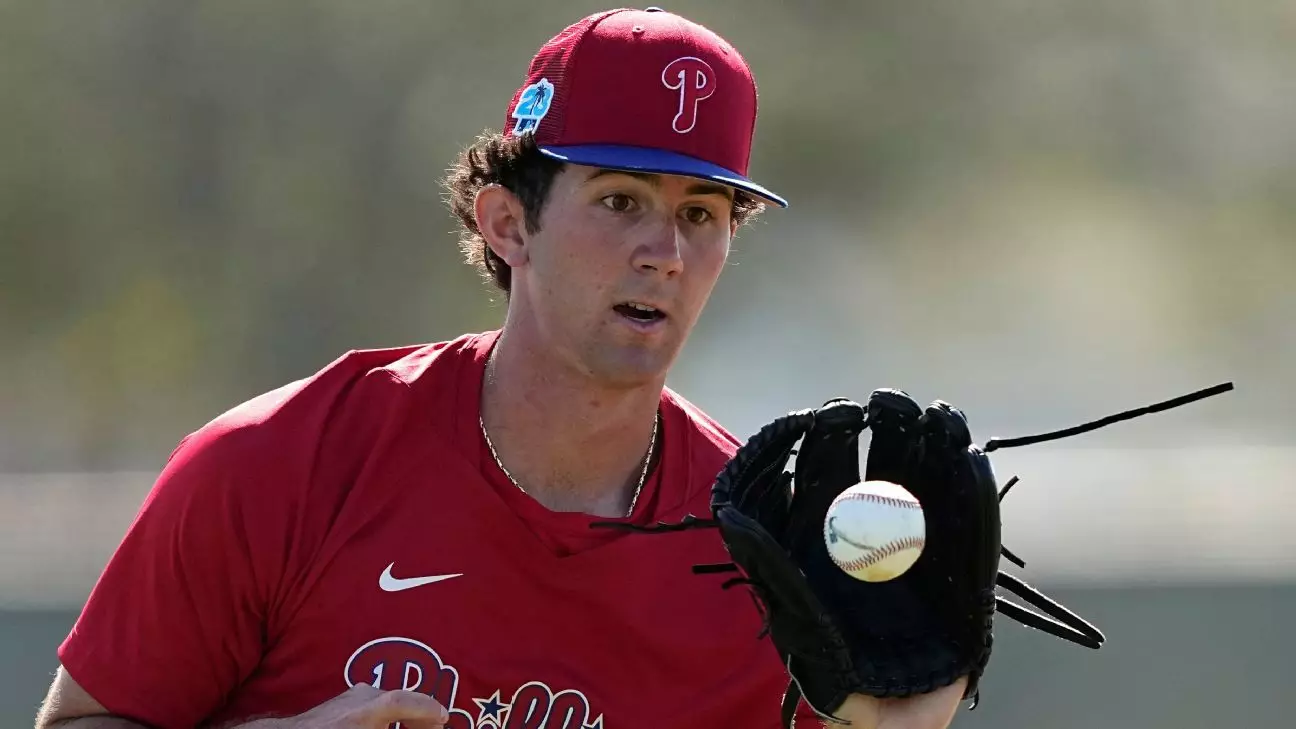Andrew Painter has been widely celebrated as one of the Philadelphia Phillies’ most promising young arms, but recent developments underscore the delicate balance between progress and caution in nurturing elite pitching talent. At just 22 years old, Painter’s journey has been marked by dazzling performances and unfortunate setbacks, most notably his need for Tommy John surgery following an elbow injury in spring training 2023. Despite the buzz surrounding his rapid ascent through the Phillies’ minor league ranks, his current status—opting out of the All-Star Futures Game to prioritize recovery—highlights the often overlooked reality that top prospects require carefully managed returns to maintain their long-term value.
Beyond the Hype: Managing Expectations
Painter’s statistics prior to the injury were unquestionably impressive: 57 strikeouts over 51.5 innings this season between Single-A Clearwater and Triple-A Lehigh Valley, and a dominant 2022 season featuring a 1.48 ERA across multiple minor league levels. These numbers, coupled with his designation as the No. 13 overall pick in 2021 and a hefty $3.9 million signing bonus, understandably fueled anticipation of a swift major league debut post-All-Star break. Yet Phillies manager Rob Thomson’s measured comments—emphasizing health and performance over immediate promotion—are a prudent reminder that baseball development isn’t a race but a carefully calibrated process.
It’s tempting to get swept up in the excitement of prospects on the cusp, especially pitchers with powerful arms like Painter. However, rushing back from surgeries like Tommy John can have severe consequences for a player’s career longevity and effectiveness. In this context, abstaining from the Futures Game isn’t a setback but a strategic decision to safeguard Painter’s mechanics and stamina, ensuring his peak potential can be unleashed without risking further injury.
The Imperative of Long-Term Vision in Player Development
The Phillies’ approach signals an organizational commitment to long-term vision over short-term thrills. Given that 86.5% of Futures Game participants eventually reach the majors, expectations are high. But only about one-fifth become All-Stars, underscoring how difficult the transition can be even for elite prospects. Painter’s situation is a microcosm of this dynamic: elite talent must be tempered by vigilance, ensuring he does not become another name in the long list of young pitchers whose careers were derailed due to impatience.
This patient development strategy also acknowledges that physical recovery is intertwined with psychological readiness. For a pitcher, regaining confidence in a surgically repaired elbow is as critical as the physical healing itself. By prioritizing a methodical return—and explicitly avoiding rushed promotions—the Phillies increase the likelihood that Painter will evolve into the reliable frontline starter his early promise suggests.
Reframing Success: Progress Over Publicity
Ultimately, Andrew Painter’s decision to forgo the Futures Game isn’t a sign of faltering ability but of wise restraint. Baseball fans and analysts alike often fall prey to equating immediate visibility with player progress. But the reality behind the scenes is far more complex. Painter’s story reminds us that true success lies not merely in spectacular debuts or highlight reels but in sustainable careers built upon health, consistency, and measured growth. The Phillies appear to understand this well and are taking the right steps to shepherd their prized prospect carefully back to peak form.

